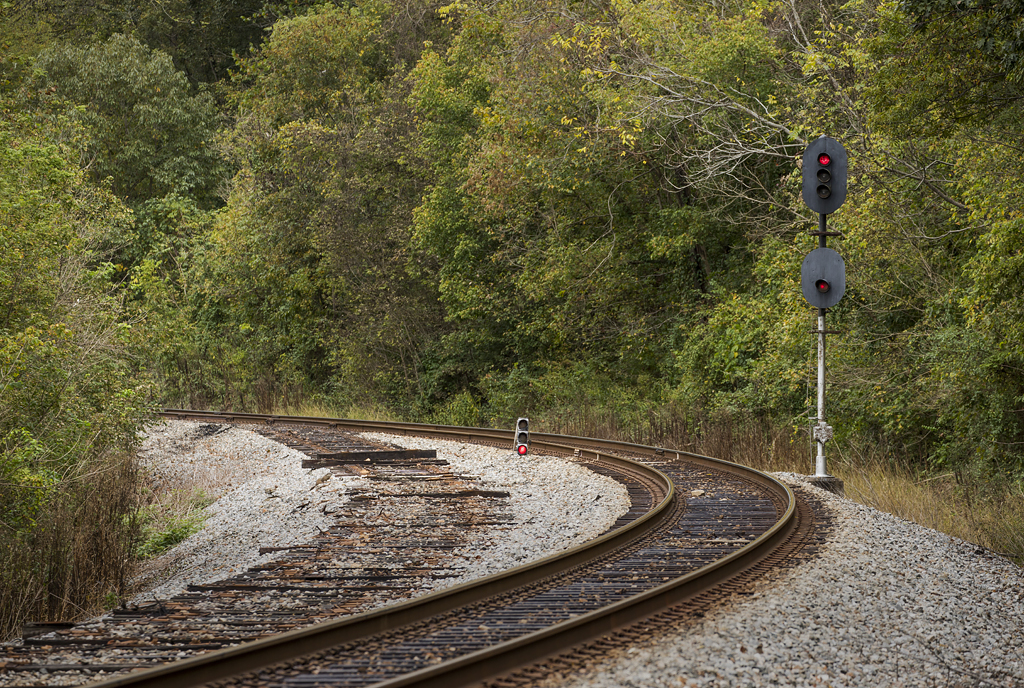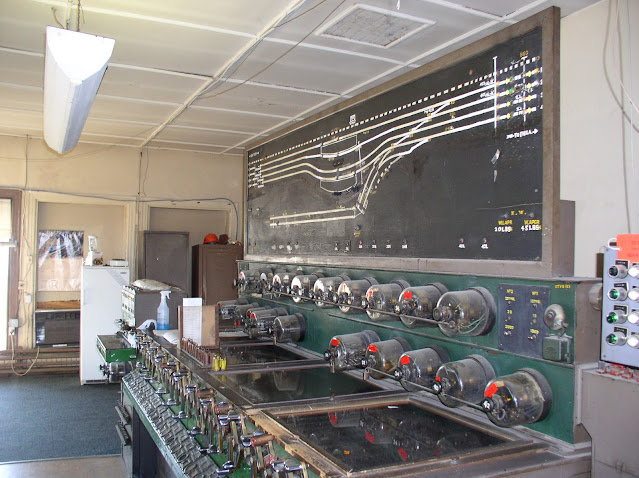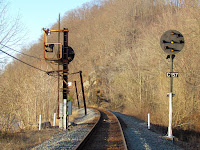In my previous post, I covered the history of NORTH PHILADELPHIA Interlocking and Tower that were constructed as part of a 1915 improvement project to build a brand new main line passenger station at what had been known as Germantown Junction on the PRR's Connecting Railway. In this follow-up article I will cover the tower itself and its interior as they stood on the eve of closure in 2005 after 90 years of service.
Although the adjacent North Philadelphia station itself is described as being designed in the Châteauesque style, NORTH PHILADELPHIA tower itself is more in line with UNION JCT and B&P JCT towers that were built as part of the Beaux-Arts Baltimore Penn Station project of 1911. From the outside NORTH PHILADELPHIA appeared to be an identical twin of FAIR tower located 30 miles to the north in in Trenton. However despite having been built at the same time, FAIR utilized an electro-mechanical US&S Style P interlocking machine,
an example of railroads in this period hedging their bets in regards to
purely power operated interlocking plants. Although both FAIR and NORTH PHILADELPHOIA interlockings
served stations with high level platforms, station tracks and a double
slip ladder, NORTH PHILADELPGIA would stay in service a decade longer,
despite FAIR having its Style P machine replaced by a spiffy Model 14 in
the 1930's. It would also avoid FAIR's severe case of "tower window
syndrome".

in the journal
Railway Signaling, NORTH PHILADELPHIA was state of the art with an all electric Union Switch and Signal Model F interlocking machine, illuminated model board and glass encased route locking cancellation timers.

As I detailed in the
previous post,
NORTH PHILADELPHIA's interlocking plant would see many changes
over the years, including a change from electric to pneumatic switch
operation, but despite all this the tower retained its original 47-lever
Model F interlocking machine. The photo below has captured the NORTH PHILADELPHIA machine in its
late 90's configuration with former 0 Track at the top separated as the Conrail Trenton Line, but the other freight and station tracks still present. Also note the east end's trailing point ladder and the Chestnut Hill Branch crossover. That crossover was a later addition and we can see how it necessitated re-drawing the Chestnut Hill Branch horizontally along the bottom of the model board when comparing with the 1915 photo above. We can see the Rule 251 between here and SHORE via the 835 and 844 single direction automatic signals. Makes you wonder if an operator was ever able to arrange a movement from #1 track to #1 track via #5 track through the station. 🤣

Skipping ahead to 2005 we can really see just how much was removed before the tower was closed. Compared with the 90's photo many of the upwards pointing switch levers on the left of the machine are out of service with their numbers missing. Although similar to the more refined
Model 14 in operation, NORTH PHILADELPHIA's Model F featured a glass
top, to ensure the full employment of signal maintainers, and a row of
cast lever indication lamps instead of the later Model 14's use of
stamped sheet metal.
Other changes from the 1915 depiction include the
removal of the electric switch amp meter and additional rundown timers to
prevent delays at peak times if routes needed to be changed. In fact
the provision of a clockwork rundown timer for practically each signal
lever was almost unheard of luxury in the industry, which speaks to the financial resources of the PRR. In the 2005 photo red tape with updated rundown times have been placed on the timer globes, perhaps indicating that the various signal changes on either side of the legacy plant required the times to be updated.
On the right side of the main machine we see the train announcement bell and higher numbered levers.
On the left side of the main machine we find the lower numbered levers
along with the 4-lever table interlocking machine for the Chestnut Hill
branch crossover supporting levers 50 through 53. Note the amount of
space in this tower on either side of the lever frame which explains how
FAIR tower was able to support a 75-lever Model 14 in the same physical
space.

On the right side of the model board we can get a somewhat closer view of the changes that took place between 1999 and 2003. The gold stenciled labels on the board are original with the hand painted white and yellow indicating
modifications. Removed portions have blacked out with
paint, however most of the previous layout along with some labeling can
still be seen. All four tracks to the west were bi-directional Rule 261
starting in the PRR era, but dedicated traffic levers were not provided
at either NORTH PHILADELPHIA or ZOO. The red lamps at the bottom
indicate which signals were currently displayed for train movements (in this case the 28R for one on track #3 west). There is also the west end low air warnings
with lamps to 45psi and 20psi and a dragging equipment detector (DED)
reset panel for DED's on eastbound tracks #1 and #2.

As of mid-2003 the entire east end of the plant was remoted to CTEC
Section 6 as CLEARFIELD interlocking and was literally wiped off the
model board despite physically occupying the same space. Because the
east end no longer exists, displayed signal lamps have had the labels
painted over and track indication lamps have been largely removed except
approach lamps on tracks #3 and #4, which likely still give some
reasonable degree of warning that a train is heading west from SHORE.
Mirroring the west end we see an east end low air alarm as well as DED
resets for westbound movements on tracks #3 and #4. Also missing is the 53 trailing crossover on the Chestnut Hill Branch.

The 10, 12, 14 and 16 signal levers previously controlled all main line
signals through the east end and were repurposed as traffic levers as
the simplest way to integrate the old 1915 mechanical interlocking logic
on the west side with the modern interlocking on the east end.
Observing the #14 lever lit for a westbound movement on track 3, appears
that these levers must be operated for each movement, just like they
had as signals, otherwise no direction of traffic is set.















